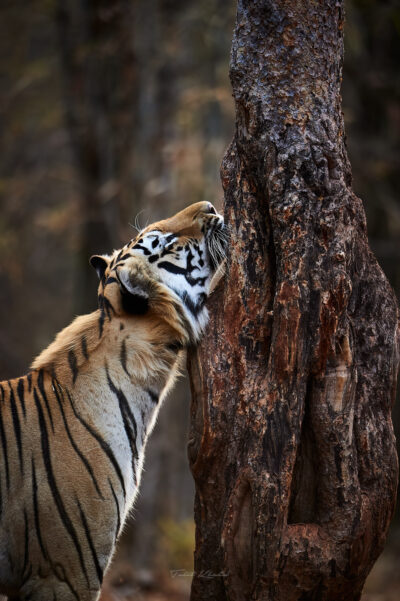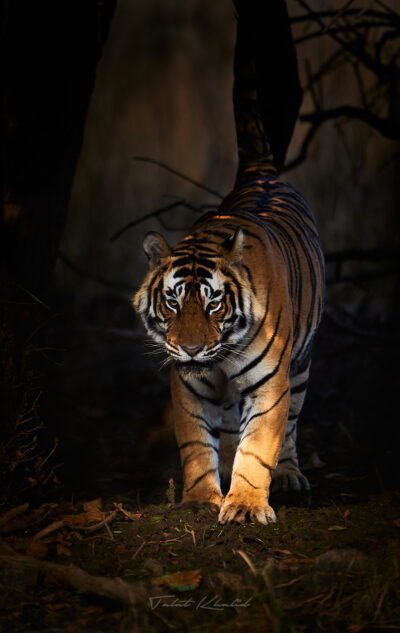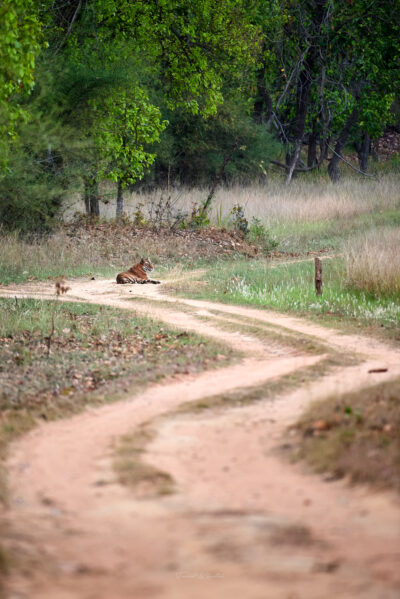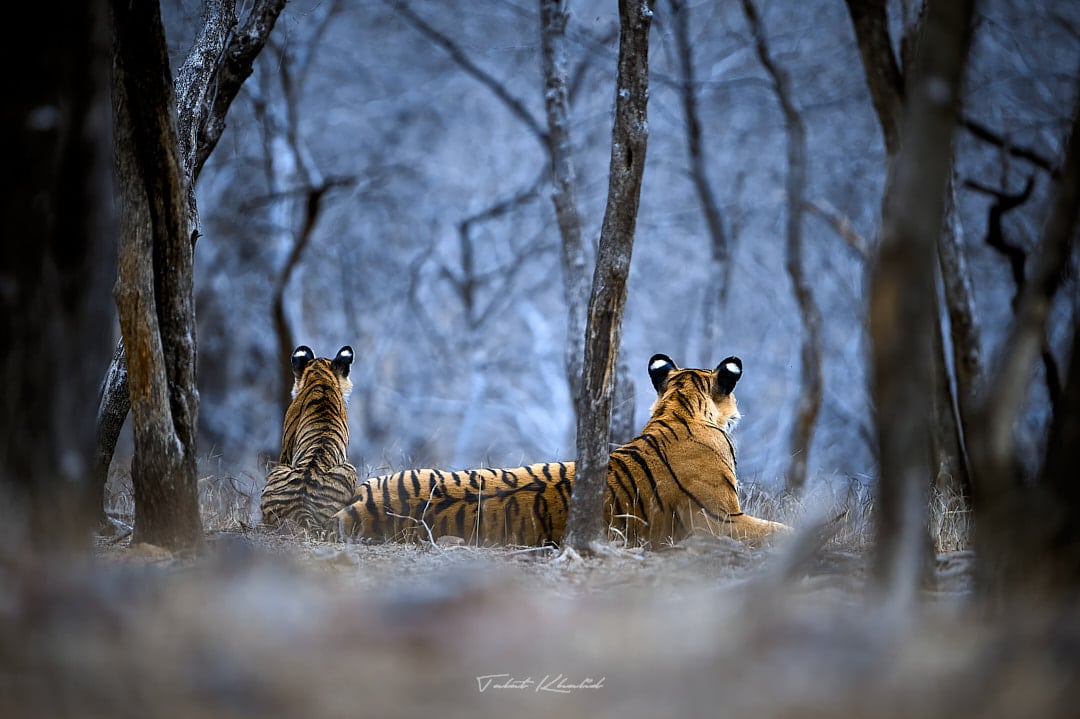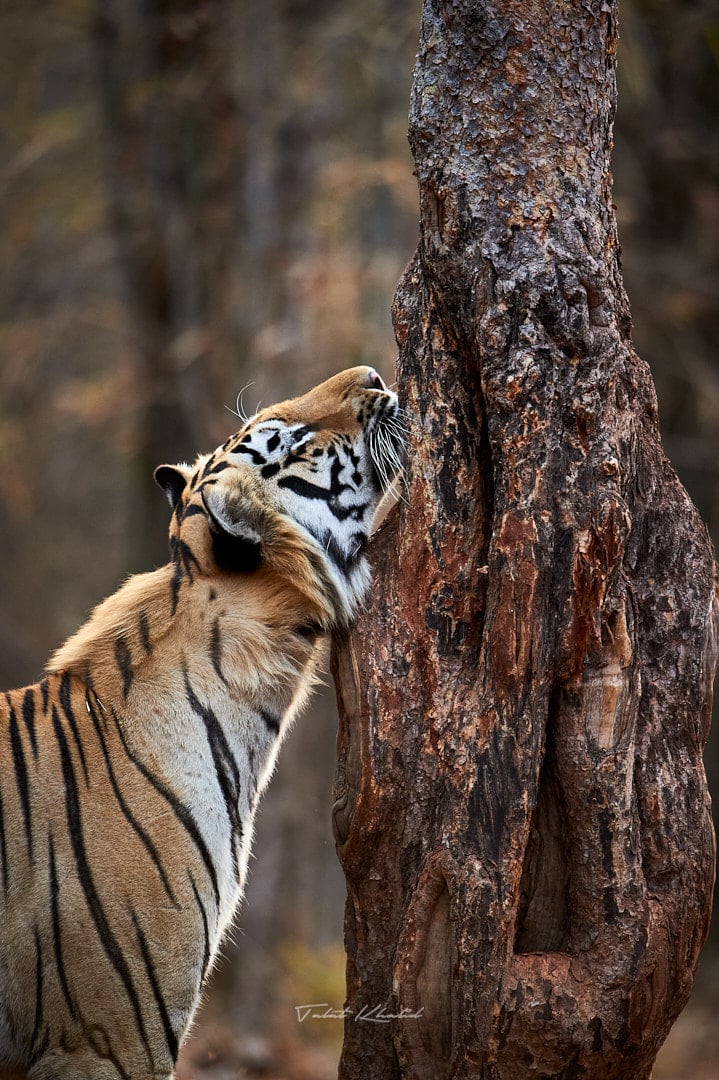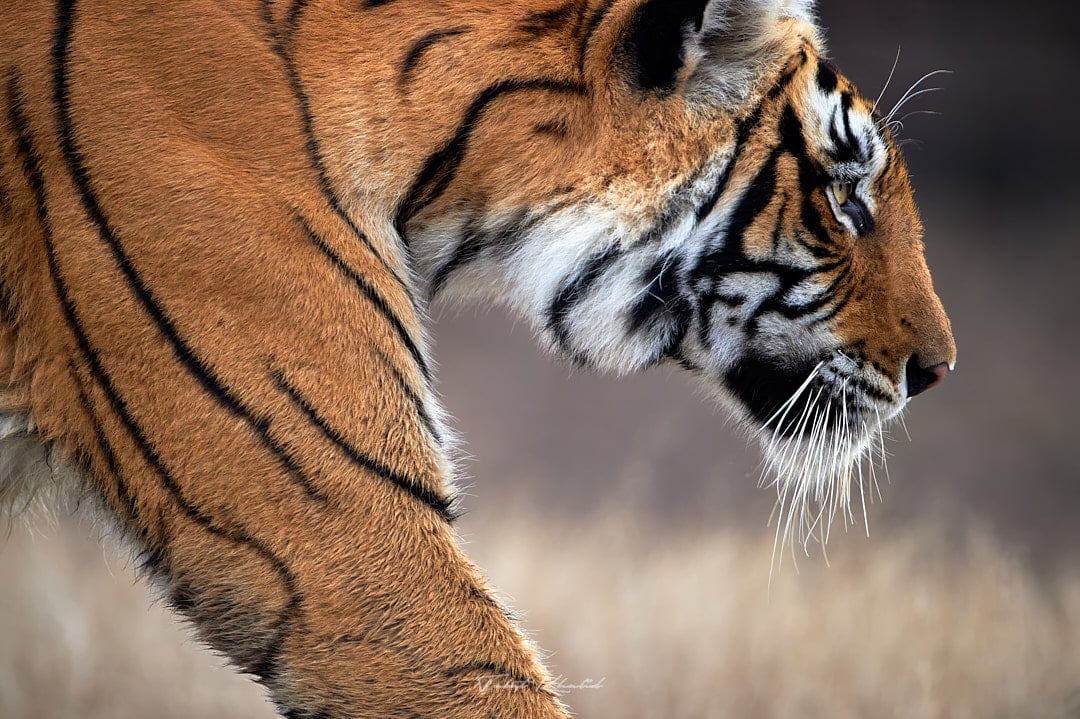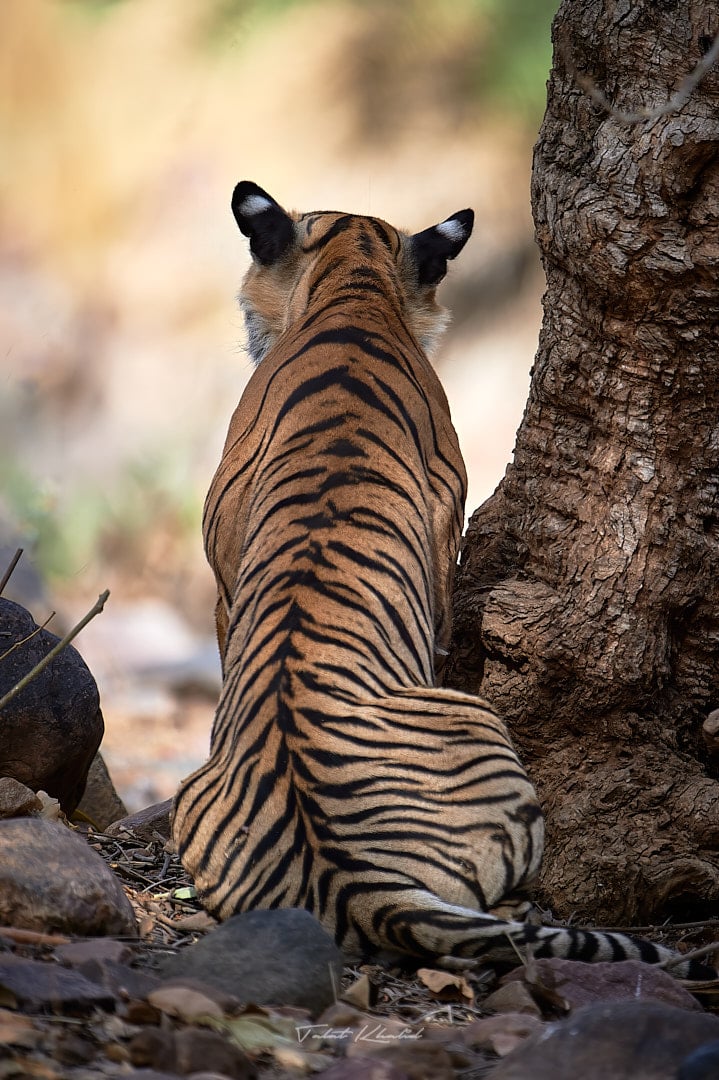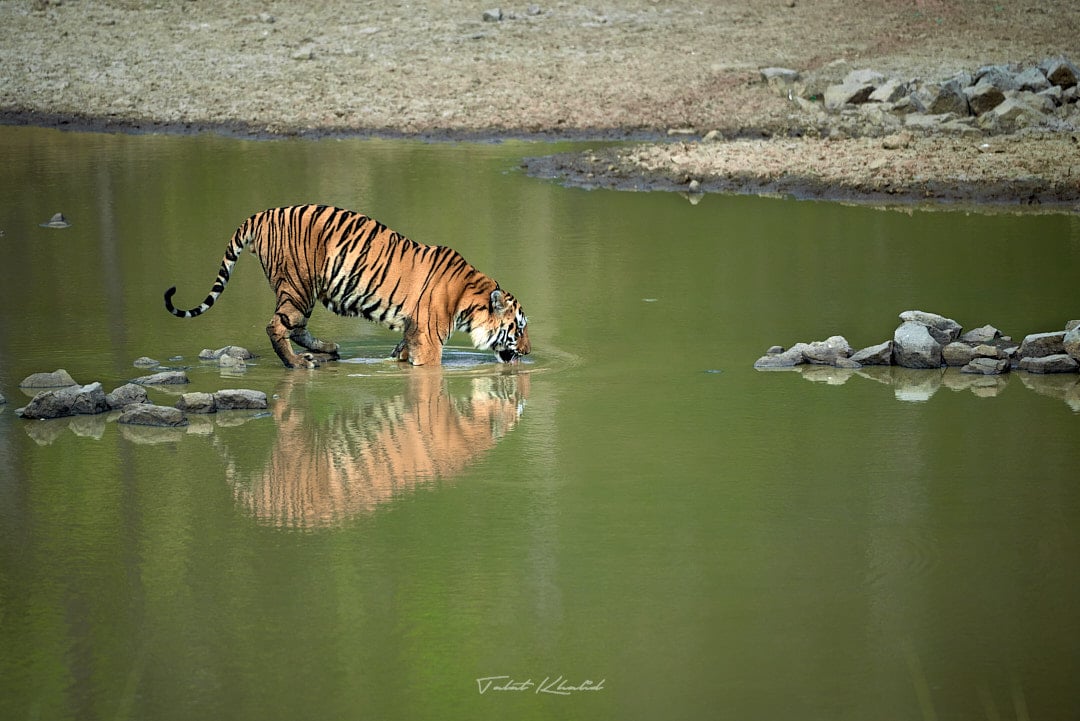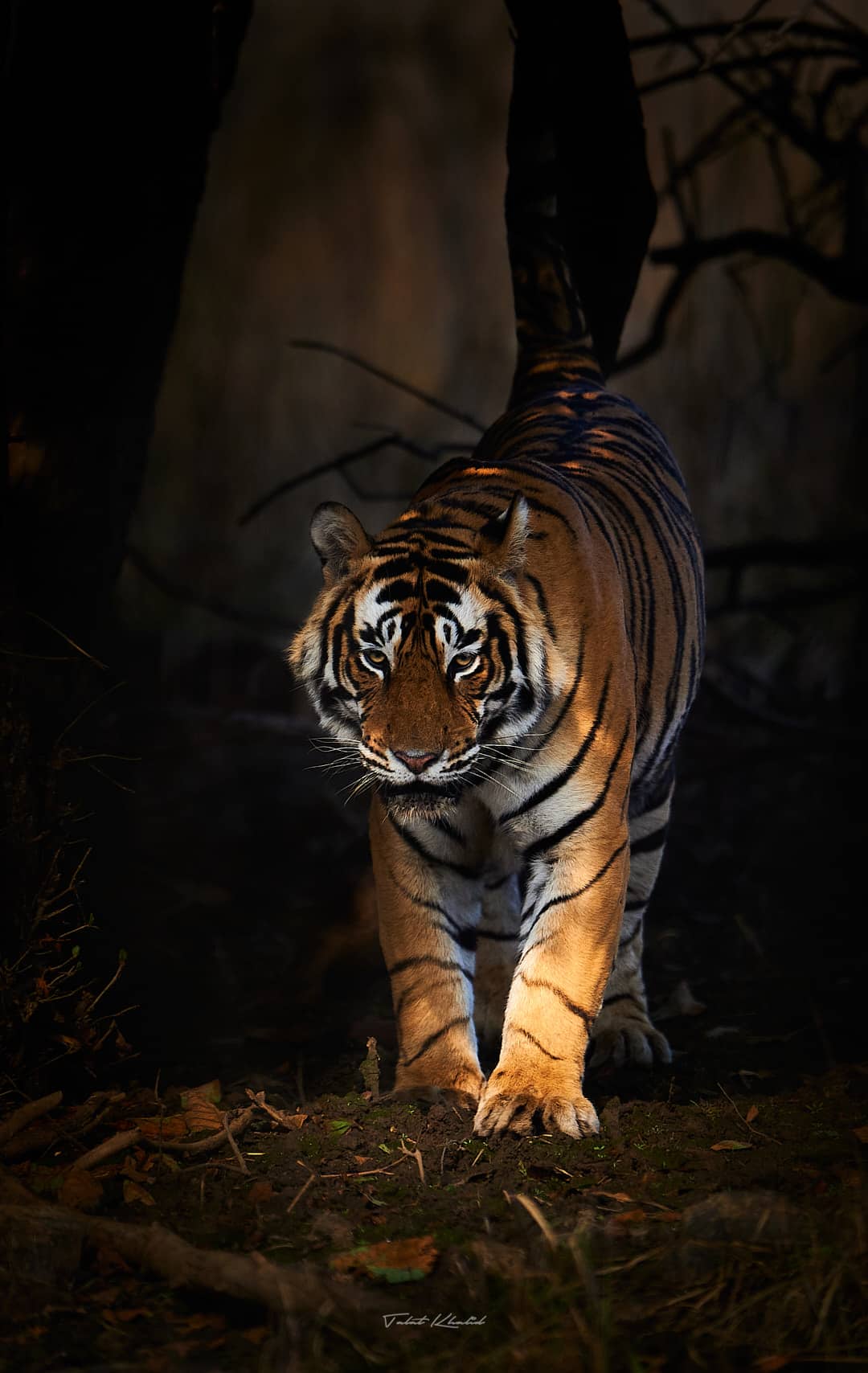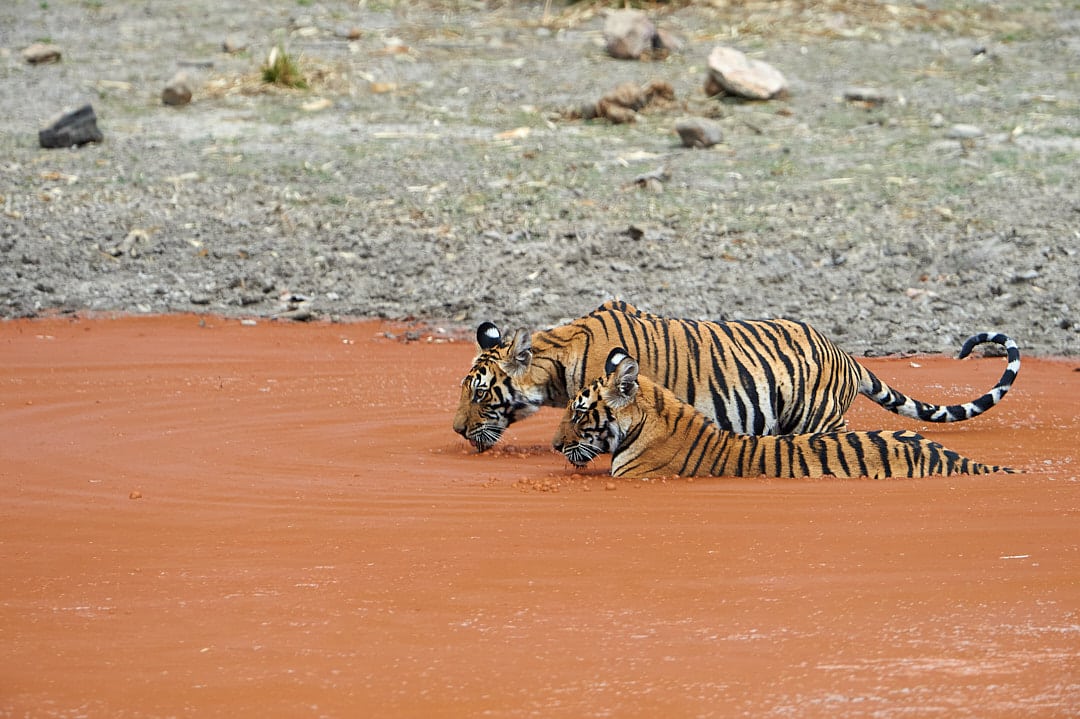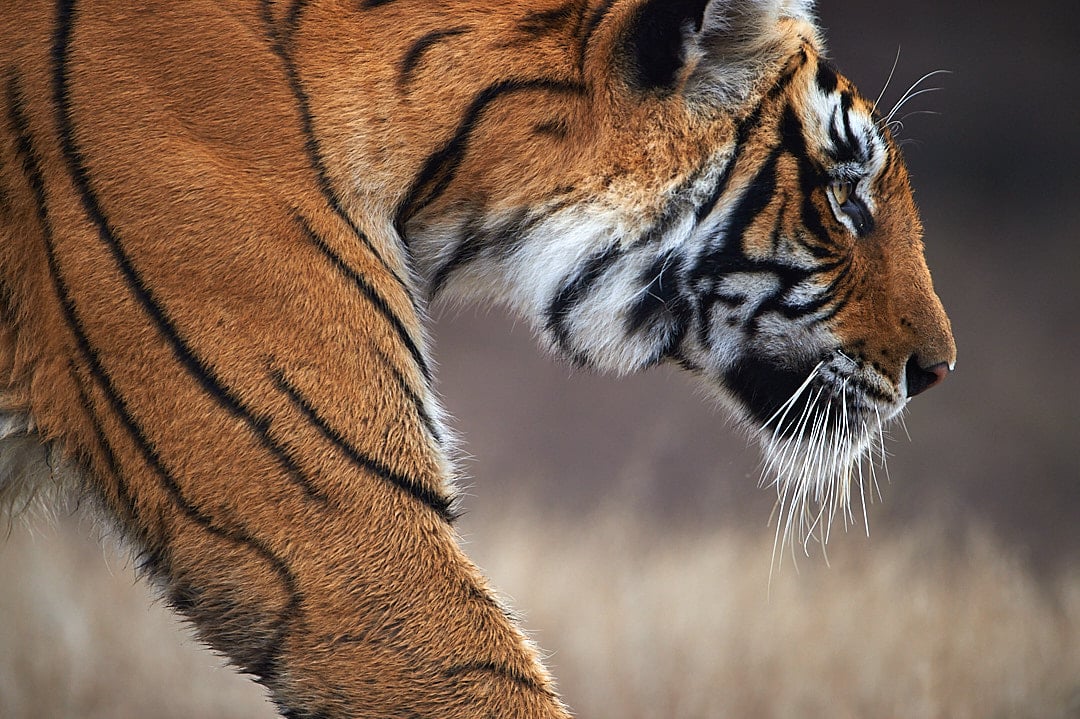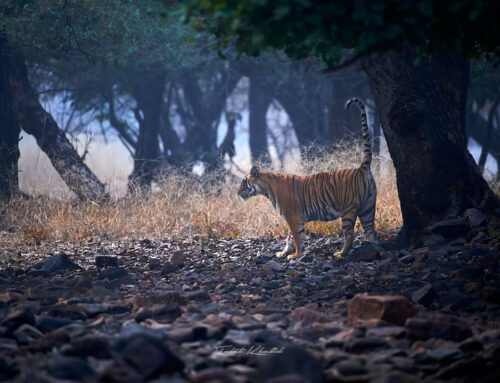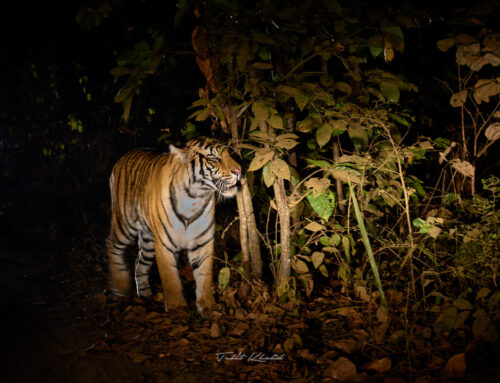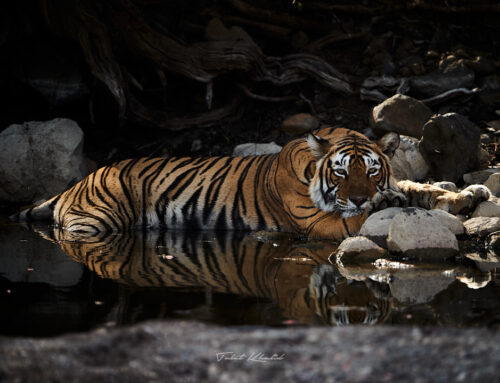Tiger Photography: A Guide to Capturing these Majestic Cats
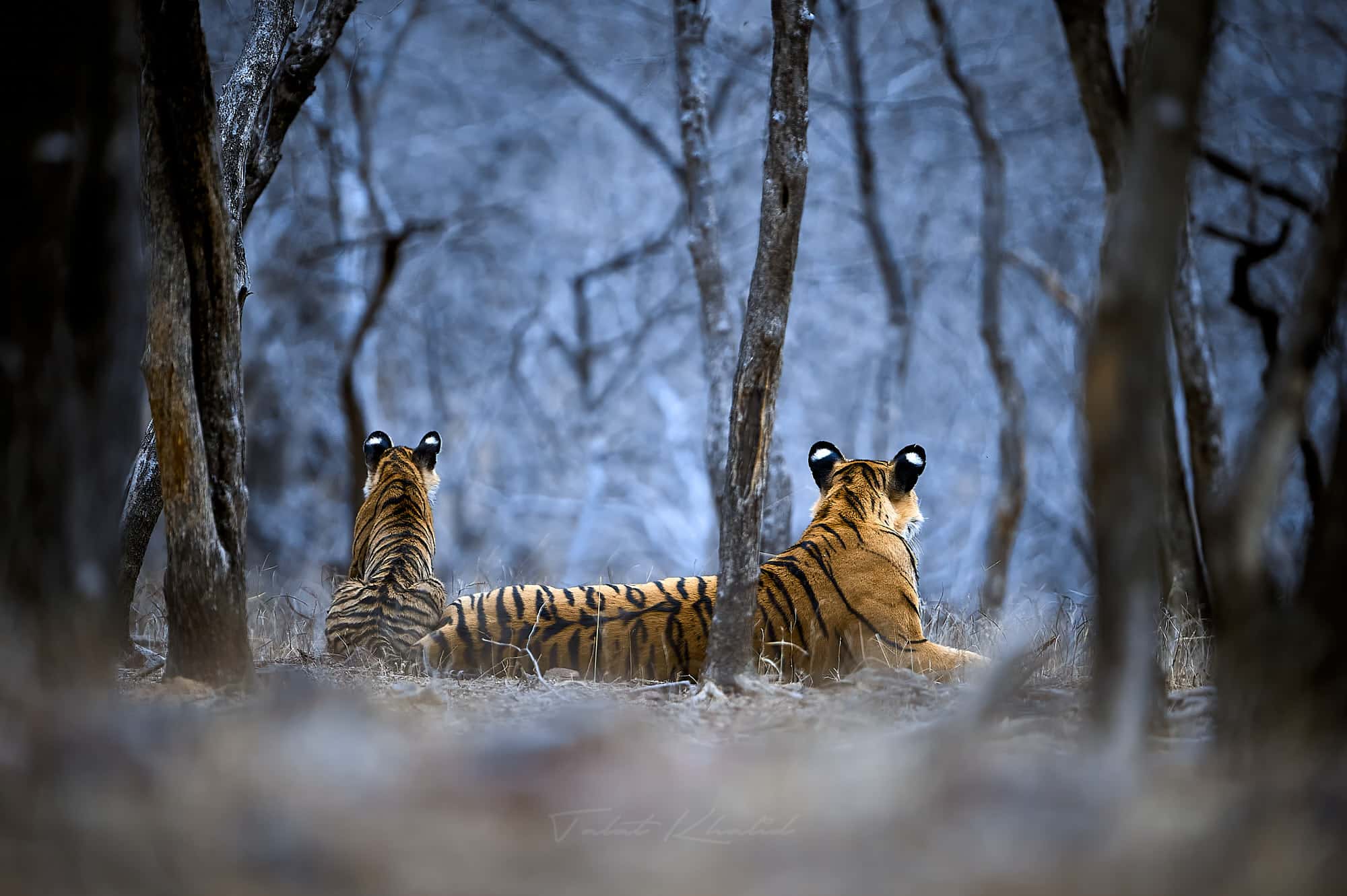
Table of contents
Introduction
Tiger Photography: A Guide to Capturing these Majestic Cats.
The goal of this article on tiger photography is to provide the Essential details needed that will help plan and eventually take better tiger photographs.
The tiger is one of the most majestic and powerful wild cats. Seeing a tiger in the wild is a dream for many wildlife lovers. Photographing or Filming one is on every wildlife photographer’s wish list.
With the declining tiger numbers and growing restrictions in the national parks, Seeing a Tiger in the wild is Challenging. Getting a great photograph of a Wild Tiger takes it to another level of difficulty. It involves knowledge, preparation, expertise, talent, intuition, and luck.
Those are a lot of words, but with correct planning, it is possible to have a lot of opportunities that will allow a skilled photographer to capture great images of tigers that will surprise and encourage many.
One can divide the Tiger Photography into 2 Major parts. The First Part and most Important item to capture a Great Tiger Photograph is to be near a tiger in the best light and location. If one can plan to do that then the difficult part is over. The best tiger photography happens when the photographer is in the right place and time.
The second part is the technical & Creative part for which the person behind the camera is responsible and with some effort and knowledge can master over time.
Planning a Tiger Photography Trip.
- Choose the right time of year. The best time to find tigers in India is during the summer months, from March to June. This is when the tigers are easier to spot. In Winters the tigers are difficult to sight but are active, the forest green and if you sight them the photographs are better as light is better. For Details, you can read my blog, which is about the Best time to see and photograph tigers in India
- Go to the right places. There are only a few national parks and wildlife sanctuaries in India where you can see tigers frequently. Some of the best places include Bandhavgarh National Park, Ranthambore National Park, Jim Corbett National Park, Tadoba National Park, etc. For more details read my blog on the Best Place to See Tigers in India.
- Go with an experienced Guide. The important thing is to go with an experienced guide or photographer who knows the area. There are small details that only a experience guide will know and can decide on the spot. This may give the edge required for a good opportunity.
- Book in Advance. Most tiger parks in India have limited safari permits i.e. Limited vehicles for each safari (there are two safaris each day). Parks are also divided into zones or areas to avoid crowding. To get the good areas it is recommended to book well in advance. Some parks like Bandhavgarh, Kanha etc the bookings open 4 months in advance. Ranthambore opens for booking one year in advance. For peak season booking in advance gives you choice to book the good zones. Some dates the permits are booked on the first day it opens. Avoid booking at the last minute unless you know the good zones are available. Most hotels would take booking at last minute and book areas that no one wants to go.
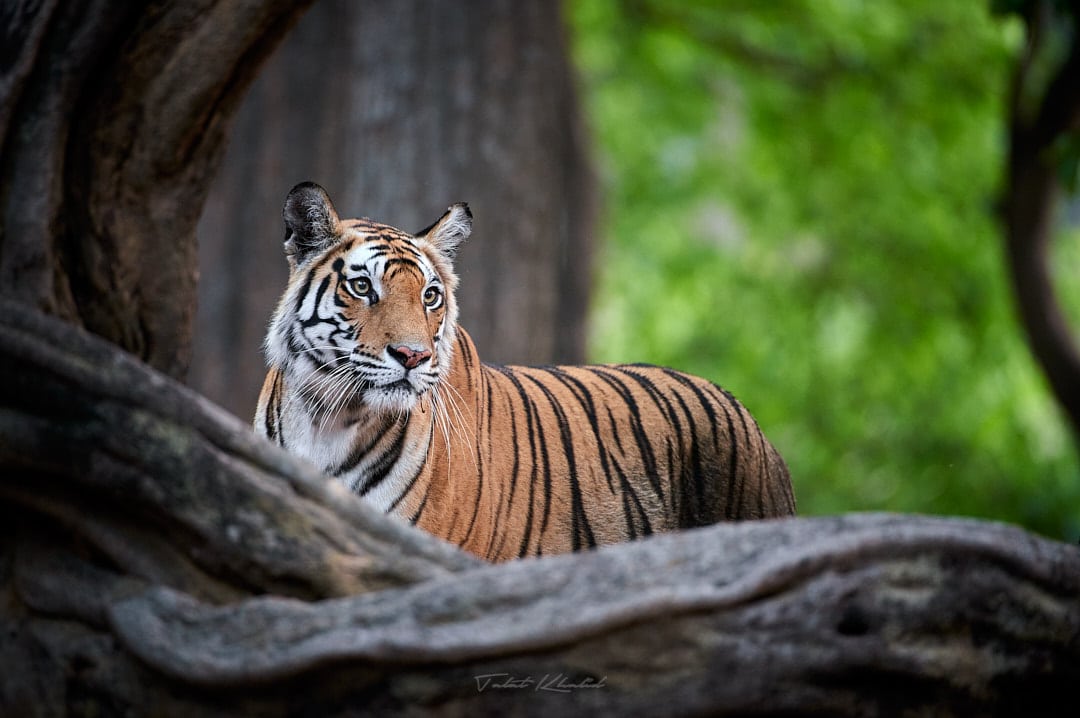
- Spend More Time in One Park. Spend atleast 3-5 Nights in One Park. Tiger photography is also about patience and time spend to get the desired image. Like any other wildlife photography you have to give more time and wait for a expected situation or sighting to happen. 6-10 Safaris give you oppurtunities to understand the place and find Tigers in good photo situations, atleast in a few of the safaris. One or Two great sightings of Tigers can satisfy even the most hungry photographer.
- Get the Special Permissions. Take advantage of any and all options that can provide some edge. In some parks there are special photography permits that allow more time, full day safari, or access to all zones. Full day permits allow you to stay the entire day inside the park without coming out till sunset. Also some parks like Bandhavgarh give an early 15mins entry and late 15mins exit. This itself is so beneficial. Entering the park 15mins before any one has entered can give you that single advantage of getting a tiger all to your self. Full day permits are very expensive, but if budget allows & is feasible then get those special permits. e.g. 1 or 2 full days safaris in 5 days trip can help you get some good opportunities especially in winter months or even summer if there are cubs. Bandhavgarh, Kanha and Tadoba have full day permissions. Ranthambore as of my writing has stopped giving such permits (Hopefully they will give again). For Details read my article on Full Day Safari Permit for Photography
- Get a Good Safari Driver. A safari driver can make or break your photography trip. Finding the tiger is one thing, however getting into the correct position with many other vehicles trying to do the same is another. A skilled driver would not only work as a good tracker but when time comes can get the vehicle in good positions for taking photographs. You can be either behind the tiger or in front of him. In Ranthambore you will have to pay a good fees to the forest dept to keep the same driver and vehicle.
- Best Time of each Park. Each parks has a peak year and a down year. Even the best parks have a down time/season when you may have difficulty getting a good tiger sighting. In General Summers are good to get frequent tiger sightings. For Details, read my article on Best time to see and photograph tigers in India.
- Use the Right Equipment. A good DSLR or mirrorless camera and a telephoto lens is needed to get good images. A Focal Length of 400 – 500mm is Needed to capture decent tiger images. A 300mm may also be Fine. For portraits or close-up shots of tigers you will need at-least 500 or 600mm. Also a teleconverter can be handy, e.g. 1.4x. That said some times the tiger can get close, and for such times carrying a second camera with a 70-200mm or another in that short range is good idea. Light is always on the lower side when tiger sighting happens in the jungle. Carrying a suitable low light capable camera is ideal for early morning and late evening sightings.
Become a Better Wildlife Photographer.
No Matter how much you plan or how good the position and situation is, how great your camera lens is, in the end, it is the person behind the camera that takes the Photograph. A talented photographer is one who when put in the same situation as many others, manages to click a unique and better photograph than the rest. So, it is implied that you have to improve yourself to be a better tiger photographer. Here are some suggestions that may help you improve your tiger photography:
- Learn about tiger behaviour. This is true for any wildlife photography. Knowing the animals makes it easier to understand where to look for tigers and how to predict their movements. Anticipate the movement before it happens. It’s the key for great wildlife photography. Shoot behaviour when you can, tiger scent marking on a tree is a typical behaviour. A good naturalist finds it easier to take better images of tigers or other wildlife. Shoot at the peak of the moment.
- Get to know your camera. Make sure you are familiar with the settings and controls of the camera lens you are shooting with. In the field you may have to make quick adjustments as needed. The best equipment does not take the best photographs unless the photographer knows what to do. Also know the limits of your camera and lens.
- Practice makes you perfect. The more you practice, the better you will become at capturing Wildlife/Tigers in their natural habitat. Practice with any animal, domestic dogs, cats or in a zoo.
- Take Inspirations. For beginers especially the most Important advice is to Look at as many good tiger pictures you can before a tiger tour. This will give you the creative juice needed when you see a tiger.
- Breath normally. When you see a tiger walking towards your vehicle it is a very exciting moment. Many photographers are so excited they litterally stop breathing to keep stable. We all do that at some point in the begining. Keep your calm, relax, breath, think.
Composition of Tiger Photographs
(This is a topic for a separate dedicated article in itself, however I have mentioned a few points that might help.)
- Tigers look great but even they can look not so good in certain poses.
- Landscape or Vertical. Most beginners only shoot landscape, try to force yourself to shoot some verticals also.
- As a general rule if the tiger is walking say from left to right, shoot when its front hands(left or right) are stretched forward. I prefer the right front hand forward and back leg stretched back in this case. Means tiger’s stride is fully stretched.
- Small things can make the image. The tail is very important, some images can look better, if the tails is swinging up or curled up.
- Oh that long tail. Keeping the tiger in the frame is important. Don’t crop the tail at the edge of the frame. A great shot sometimes is ruined just cause the tail is cropped.
- When tiger is walking towards the camera i.e. head-on straight, they usually look good in a vertical compositions. Of course if you find that the background and habitat is beautiful you can take a landscape shot with the tiger in Center or Side.
- Tigers usually walk slowly so shutter speeds are not a problem. If you are shooting in bright light be careful as you can easily overexpose the tigers white markings on the head.
- Tiger ears are very sensitive so they keep listening in both directions. So one ear may be always listening behind. Ears are very important to compose a good portrait and if possible both should be in the same direction facing the camera. Rules are meant to be broken so if you have got the general good shots try for some creative shots. Some times in the grass when the tiger is looking the other side, just the white marks on the back of the ears can be as important for a good composition.
- Look for a good pattern or design. A Curved or S shaped road with tiger at end is good. A great landscape especially with deer looking.
- Predator and Prey shots are usually difficult but can happen so be alert.
- Action is something we all long for however most of the time tiger will not be very active. If you are lucky enough to get the tiger in action e.g. chasing a deer or jumping or fighting you cannot spoil the image. Check your setting always so when something special happens you don’t mess it up. This is specially true if you underexpose or overexpose, don’t forget to reset the camera. Light and shadow are common in the forest.
- Beginners or even seasoned amateurs should read good books on photography & compositions. The few I have read and can recommend, are listed here Books on Nature Wildlife Photography
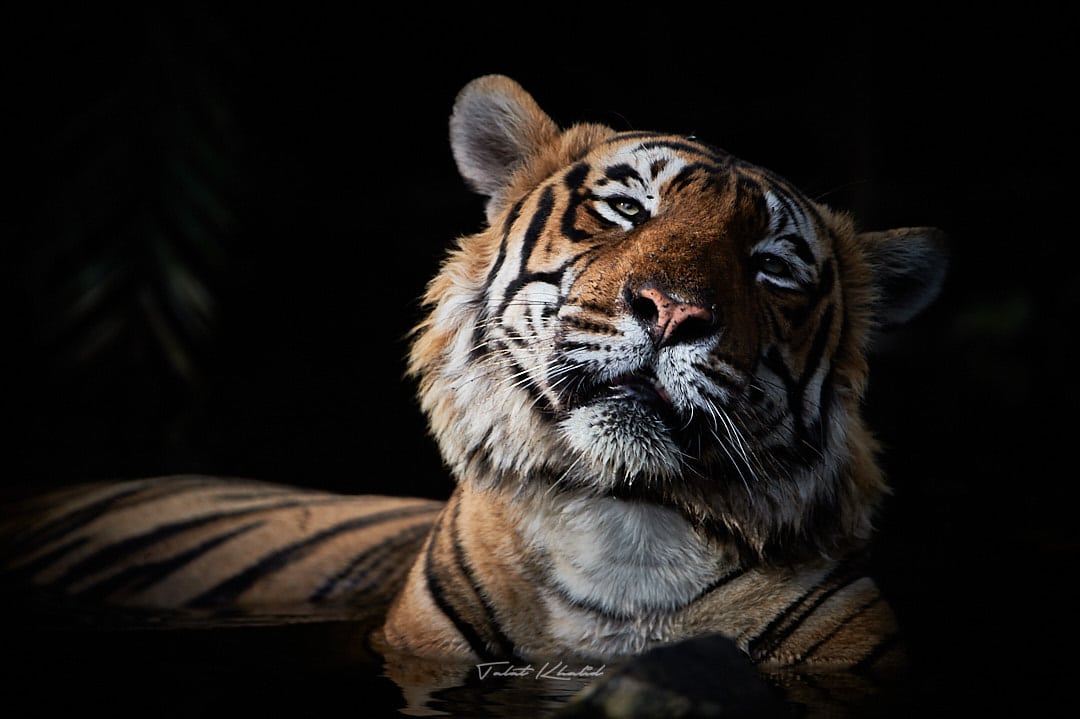
Supporting Big Lenses and Equipment.
Most Indian parks use a small 4×4 vehicle know as Gypsy. For photography with big teles 500 and above, more than 2-3 photographers is crowd.
- Tripods are a big no. Monopods and Bean Bags are best. Try both options as the seats of the vehicle can be very congested even for single person. Don’t carry big bags. Carry only what’s needed on safari.
- Protect from Dust and Rain. Always carry a rain cover for your equipment as these days it can rain for few days even in peak summer or winter. When it doesn’t rain its very dusty in most parks. Carry a cover to protect from dust. Even a pillow cover from the hotel can help. Keep the contacts clean from dust. Avoid changing lenses or converters when dusty. Every once in while I see people with a lens that doesn’t focus right when the tiger is there. The most common problem is contacts that are not clean.
- Keep it Simple. Over the years I have realised that the simple setup gives more opportunities to capture better photographs and less missed opportunities.
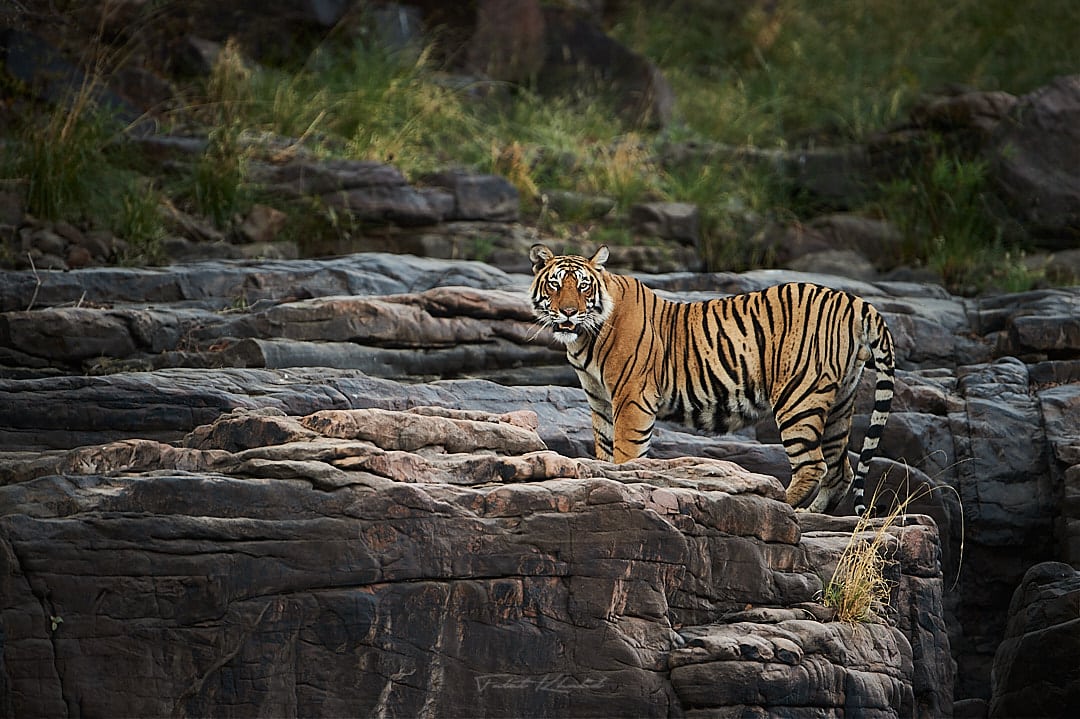
Some Advice and Situations for Tiger Photography
- Unexpected low sightings. After all the preparations and correct planning sometimes things don’t work as per plan. These days the most common is a sudden change is weather and unseasonal rain and the tigers disappear for a few days. This is wildlife and you have always keep that in mind. It doesn’t always work as you wish.
- Be patient and spend more time. Although in some parks it’s is easier to track a tiger, however it is a wild predator skilled in stealth. It may take some time to find tigers, so be patient and keep your eyes open. You should spend at-least 4-5 days in a park to get decent opportunities. There are times when a few safaris you will see nothing. Having more safaris means you still got hope and can get lucky.
- Be respectful of the wildlife. Do not disturb the tigers or wildlife or their habitat. Good photography comes only when you and your subject is comfortable. As a rule, Let the animal be comfortable and come to you, in particular when it’s a tiger who can really do harm. Once an animal is comfortable it will stay for longer in the open and give you shots of natural behaviour. When the tiger is coming out of the forest maintain a safe distance so both you and the animal is comfortable. When a tiger walks on the road/trail and is following your vehicle keeping a good distance helps keep the animal comfortable and keeps the tiger on the road for longer. If you don’t maintain the distance and get too close most of the time the tiger will leave the trail and enter the forest. This is the end of the sighting. Many new comers are so focused on taking that closeup (some with mobiles) that they forget this is the top predator and in a matter of seconds can do you damage. If you have a long lens then it is much important for you to maintain a distant to get the full tiger. You don’t want to have a 600mm and point to shoot its nose when it’s walking. Yes if the tiger is comfortable and comes close to you while you are waiting and not many other vehicles around you can shoot with even a 50mm.
- Be respectful to the people. The locals are used by forest dept to be forest guides to track and keep a check on rules. Some of these are very experienced and talented. Some are new and may not know your language. Make them comfortable, most people work their best if they are comfortable. If you don’t get a good guide on one drive you will get a better one in the next. But as a human don’t insult the less skilled. The locals are needed to protect these forest. Some of these people come from tribes and depend on forest for their livelihood. Tip them regardless of whether you have seen a tiger or not. Tipping is not just payment its a gesture of kindness and helps.
- Be respectful of the Rules. Each park has some rules. The park guides will inform you about them. Some rules may not be practical for photography, however try not to do anything that harms the wildlife or the people working in the park. Kindly make sure you follow the rules.
- Have the right expectations. This is India and not Africa. Keep this in mind all the time. This is a Jungle and not an open grassland. The density of animals in these jungles is far less that the African plains. Finding the animals in jungle is far more difficult. If the Tigers wants to hide no tracker can find them. Think of it this way, the technology is making photography easier while the limited wildlife and difficult rules balance that and keep it exciting. Treat the forest as wild places and not a zoo.
Gallery
Check more of our best Tiger Photographs
Conclusion
With some planning, patience & practise you can get good Tiger Photographs.
For Fantastic Tiger Photography join our Tiger Photography Tours in India.
